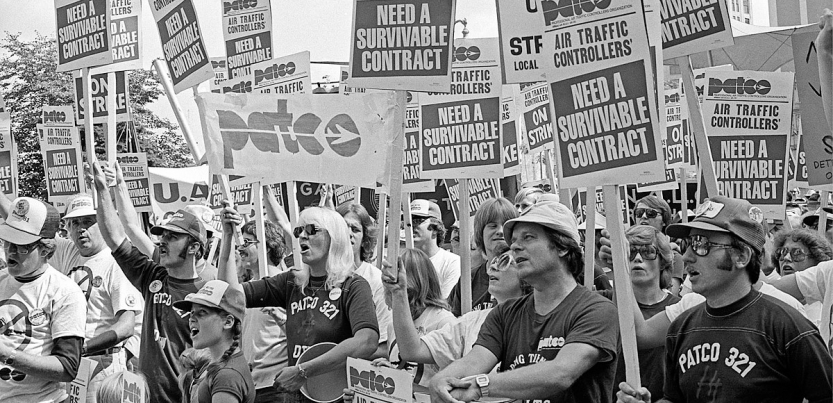As public sector unions contemplate losing key rights under the law, it’s worth remembering that for much of their history, such unions organized with no rights at all.
It wasn’t till 1958 that New York became the first city to authorize collective bargaining for city employees. Wisconsin did the same for state employees in 1959, and federal workers got bargaining rights in 1962.
Yet as early as 1940, a book titled One Thousand Strikes of Government Employees described strikes dating back to the 1830s, when workers at U.S. Navy shipyards stopped work multiple times to press demands for better wages and conditions.
The book, written by David Ziskind, a lawyer at the Department of Labor, actually identified 1,116 strikes, involving firefighters, teachers, sanitation workers, hospital workers, railroad workers, postal employees, printers, park laborers, bathhouse attendants, caddies at public golf courses, gravediggers, construction workers… the list goes on and on.
In short, collective action was a tradition for more than a century before the law began to catch up.
Public workers formed unions without waiting for legal recognition. For instance, letter carriers established the first postal union in 1889. The American Federation of Teachers formed in 1918, the same year that several independent unions of firefighters merged to form a national union. AFSCME was born in Wisconsin in 1932, the same year as the American Federation of Government Employees, a union of federal workers.
So take heart—history shows that workers can mobilize and organize even without cover of law. Public workers have done it time and again. Of course labor law matters, but it’s not the only thing that matters.
UNORGANIZABLE?
A related lesson is that even workers who are supposedly unorganizable can in fact organize.
Never was this more evident than among the unemployed workers who found jobs in public works during the Great Depression. Of the 1,116 strikes in Ziskind’s book, nearly 700 involved people working in New Deal programs.
These programs employed jobless people at subsistence pay. They provided only temporary employment; law dictated that these workers would be dismissed as soon as jobs became available in the private sector. And as public employees, the workers had no legal rights to collective bargaining.
Yet they did organize. On top of mobilizing hundreds of strikes, they built organizations. And they won concessions; construction workers, for instance, won shorter workweeks with no loss of pay.
Mostly these workers organized not through recognized unions but through local Unemployed Councils, Unemployed Leagues, and groups called Workers Alliances. In 1935-1936 these local groups merged to form the Workers Alliance of America, whose first convention brought together 791 delegates representing at least 200,000 workers.
Besides workplace fights, chapters of the Workers Alliance agitated for better relief provisions for jobless people and demanded that unemployed workers be recognized and respected as workers.
Along the way, the Workers Alliance also broke new ground in organizing united action by Black and white workers in the Deep South, where simply holding a racially integrated meeting was against the law.
In other words, this was what we would now call social justice unionism—worker organizing that combines militancy on the job with a fight for justice in the wider society. It went deeper than a reciprocal exchange of support between unions and community groups. The Workers Alliance recognized that causes beyond the workplace were crucial to its own members.
It’s no coincidence that this social-justice approach proved especially effective at organizing “unorganizable” workers. People presumed to be unorganizable have almost always been those without political clout—for instance, migrant workers, recent immigrants, African Americans in the Jim Crow South, and others ignored by lawmakers. For workers on the political margins, building power on the job was—and still is—inextricably knit up with struggles to assert their rights in society at large.
